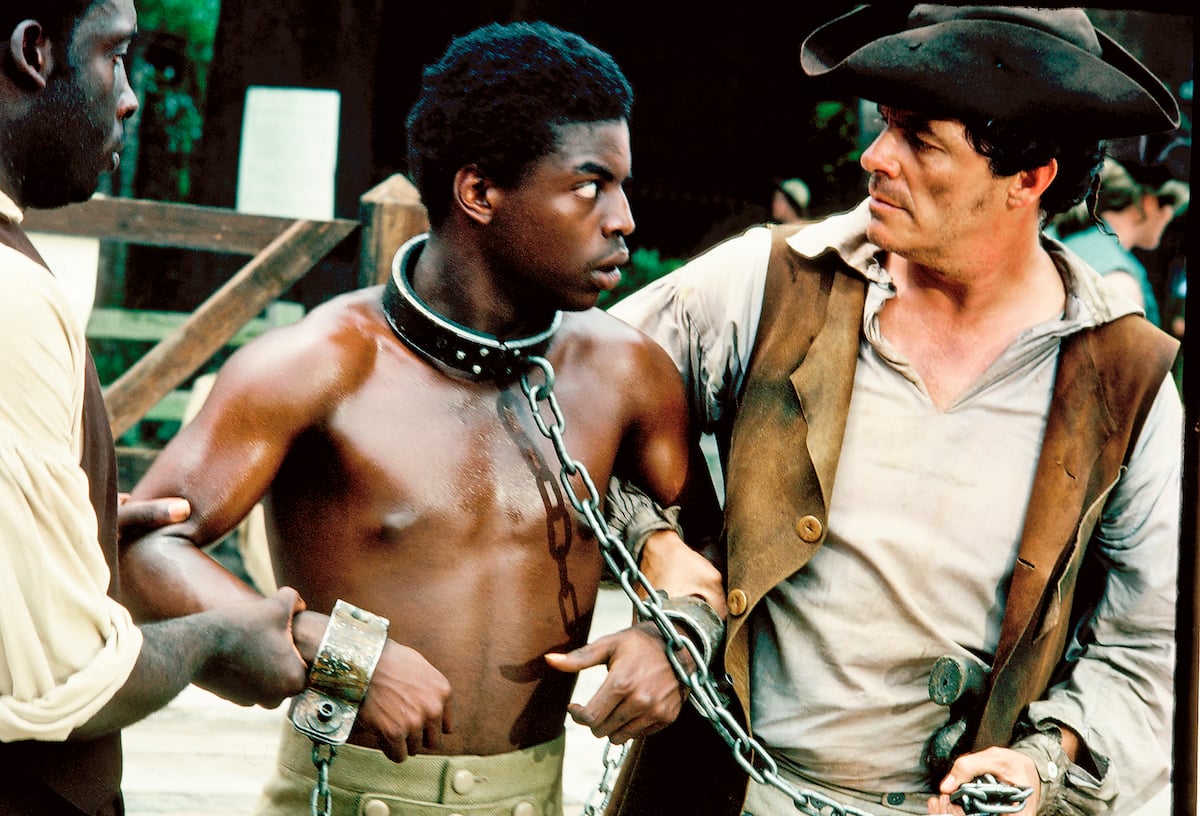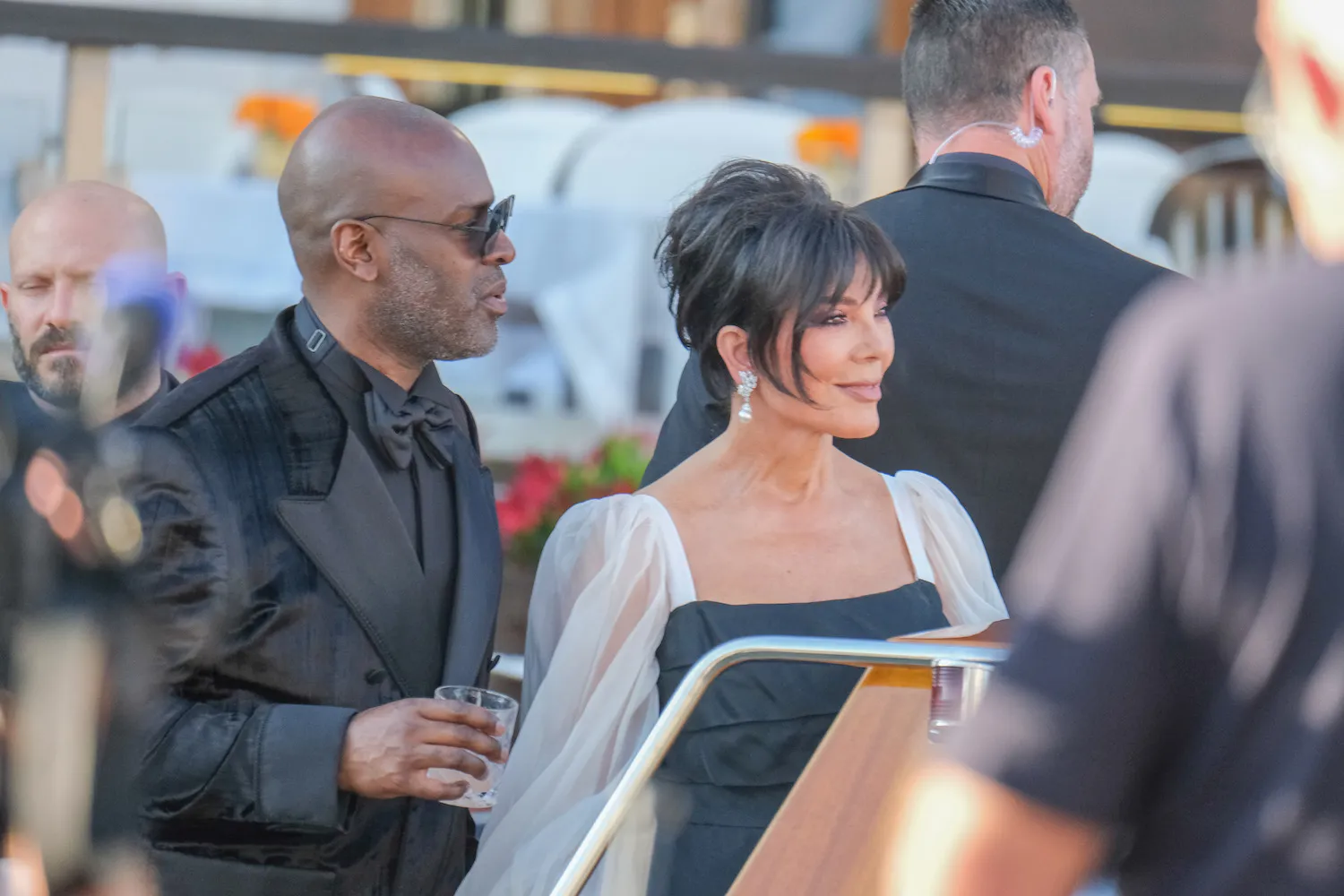‘Roots’: LeVar Burton and Vic Morrow Went on Talk Shows to Prepare Viewers for the Difficult and Now-Famous Whipping Scene
In 1977, LeVar Burton and Vic Morrow acted in ABC miniseries Roots, which detailed America’s history of racism and slavery. While the enlightening series was educational, some scenes were so graphic that Burton and Morrow went on talk shows beforehand to prepare viewers for the difficult scenes. This especially involved the now-famous whipping scene, which disturbed the cast and crew even as they filmed it.
‘Roots’ brought up a lot of emotions for Americans

Based on author Alex Haley’s novel, Roots aired for eight nights in 1977. The miniseries detailed the life of Kunta Kinte, a Gambian boy sold into slavery at the age of 15. He joins other Black people sold into slavery on a three-month-long journey by ship to Colonial America, as The New York Times details.
After arriving in America, Kinte is sold off at an auction to John Reynolds, a local plantation owner. Reynolds assigns an older slave, Fiddler, to teach Kinte the ways of servitude and English. He also gives Kinte the English name Toby. Fiddler and Kinte become friends due to their shared interest in wanting to preserve their heritage and cultures.
Due to his Islamic roots, Kinte refuses to eat pork. He also makes several attempts to escape but is unsuccessful each time. After breaking his leg chain in one attempted escape, his slave owner, played by Vic Morrow, gathers all of the slaves and directs one to whip Kinte for his refusal to embrace his American name. Fiddler comforts Kinte after the lashing, informing him that there will be other days to escape.
Many Americans hail Roots as an eye-opener. Before it aired, many people knew about slavery and racism only from a few paragraphs in textbooks. After Roots premiered, it enlightened many viewers and empowered others.
The TV show marked the first time slavery was discussed on a broader scale to a larger audience: 80 million viewers every night, reports the New York Times. Needless to say, it impacted many with lessons about this time in American history.
ABC asked LeVar Burton and Vic Morrow to prepare audiences for the brutal whipping scene
As raw as Roots was, no one would have imagined how authentic the miniseries would be. The show tried to paint a realistic picture of slavery, giving finer details about what happened during this time. One of the most vivid scenes involved that violent lashing of Kinte after his unsuccessful escape attempt.
According to PBS, the cast and crew had to shoot the scene twice because it was so unnerving for Burton, who found it hard to relax. Each time he knew the whip was coming toward him, he’d tense up — a natural human reaction, but a giveaway that he was acting. Of course, Burton and the rest of the cast and crew wanted the scene to seem as realistic as possible.
The scene was so graphic that the network decided to fly Morrow and Burton to talk shows. The pair gave interviews to prepare audiences for what they were about to see. This helped market the film. But, more important, it helped viewers see the Burton and Morrow were actors and real-life friends, not a slave owner and slave.
The ‘Roots’ cast reflects on other difficult scenes
For those involved with creating one of the most groundbreaking miniseries in entertainment history, the experience was surreal. The Atlanta Journal-Constitution sat down with a trio of the show’s original stars to look back at the series and what it meant to them.
Ben Vereen (who played Kinte’s grandson) didn’t understand just how successful the show was until he attended an awards show, and famous TV host Merv Griffin congratulated him. Louis Gossett Jr. (Fiddler) also reflected on Roots. He recalled seeing Morrow apologizing to Kinte beforehand for the whipping scene.
The cast also recalled some of the horrific scenes they participated in filming, including one where Vereen’s character (“Chicken” George) put up his chicken to fight for his freedom but lost. Although the cast members shared a laugh while recalling the events of the cockfight, they admitted it was hard dramatizing the cruelty and hardships Black people have endured throughout the years.


